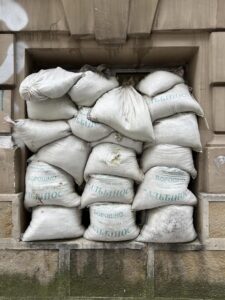“Never doubt that a small group of thoughtful, committed citizens can change the world; indeed, it’s the only thing that ever has.” — Margaret Mead
What drove me to abandon my relatively safe and comfortable life to enter a war zone? I’m not Ukrainian, nor possess Ukrainian ancestry. Putin’s blatant atrocities aside, was it something more personal? Was it because I lost two uncles in WWII fighting fascism? Or witnessing the recent cult-like rise of authoritarianism in my own country? Could it be watching Putin dissolve protections for victims of domestic violence (I’m a survivor) and minorities, creating essentially an open-air prison for his citizens, dissidents punished harshly (or worse) for voicing their opinions? Or was it because I exposed a predator with Putin-like behaviors within my own family, bearing witness to the relentless, generational damage he inflicted upon loved ones?
This is the story of my ten days spent in Western Ukraine, painting soldiers recovering from their war injuries. Ordinary citizens: a carpenter, an artist, an IT engineer, and others voluntarily took up arms to defend their democratic way of life, and in doing so, became extraordinary. Each individual who sat for me was gifted his portrait as a personal thank you for confronting the horrific brutalities visited upon them, on their families, communities and freedoms, while bravely protecting democracy itself.






















